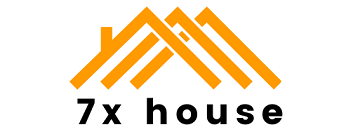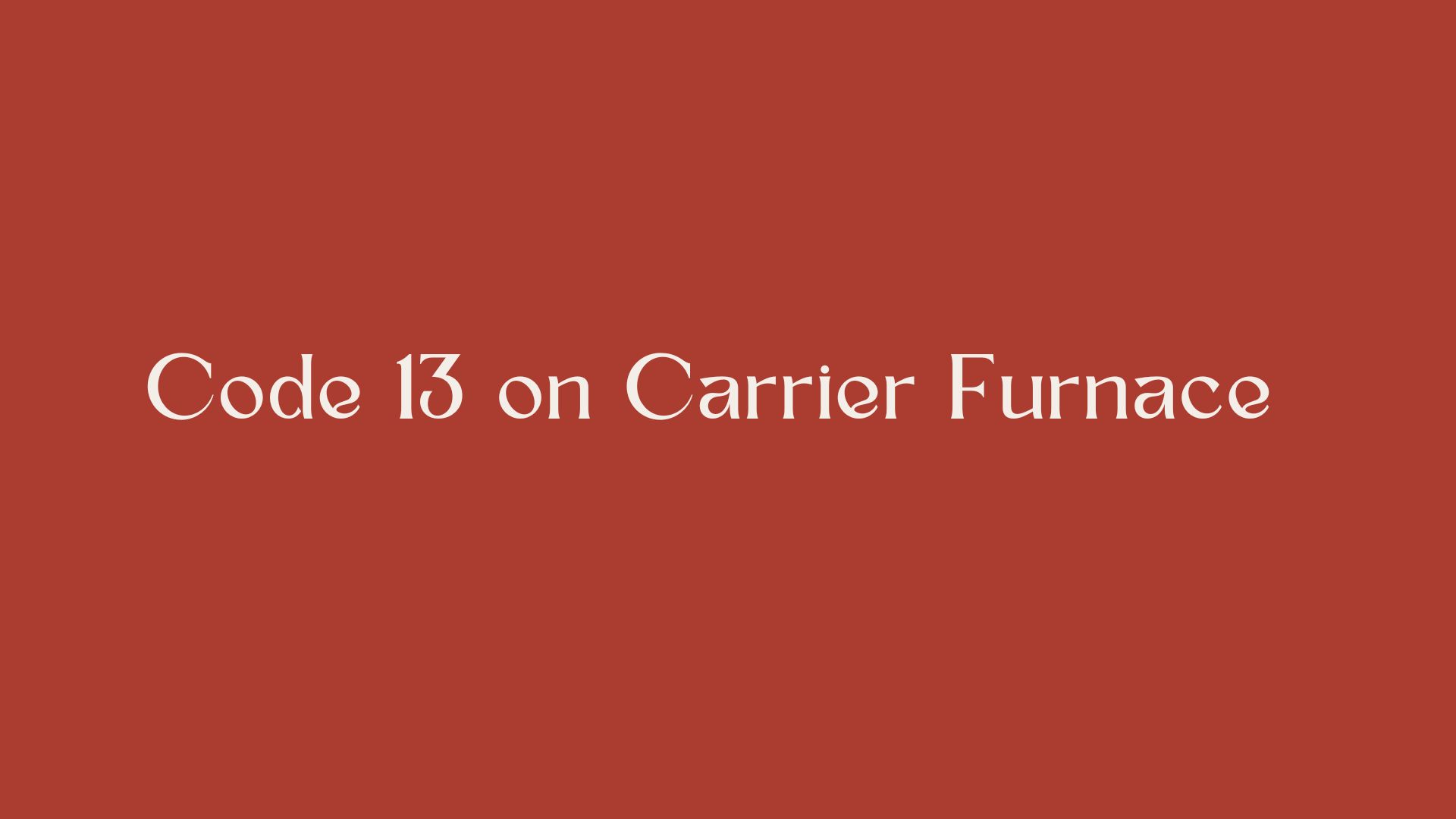In this article, we will specifically gain knowledge about code 13 on carrier furnace. On a Carrier furnace, a restriction of airflow will result in an error 33 and, on rare occasions, an error 13 because of a safety lockout. Limit Circuit Fault is Error Code 33. It denotes an open high limit or flame rollout switch. Error code 13(Limit Circuit Lockout) can result from this. Error 13 denotes a limit or flame rollout that has been active for longer than three minutes.
Table of Contents
Reset Method of Carrier Furnace
We must check the furnace’s air flow and, if necessary, boost it to resolve this problem. You can check out the troubleshooting advice listed below.
Air Flow Issues
- Check the filter’s condition. Make that the airflow is not being obstructed by dirt.
- All registers and vents should be opened.
- Make sure the register grilles and ducts are clean.
- A/C evaporator coil cleaning
- Examine the blower wheel’s condition. Check to make sure the blades are all present, tight, and clean.
- To ensure that the air compressor is operating at its maximum speed, check the capacitor and blower motor.
- Ensure that the combustion air is adequate. Inspect the entering PVC pipe on furnaces that are 90% or more. Make sure the 80 percent furnaces are not receiving combustion air and are not tucked away in a closet. 80 percent of furnaces use the surrounding air for burning.
- If everything is in order, turn the blower motor’s heat mode speed up by selecting a faster frequency on the controller unit.
Switch Operation
- After the furnace has cooled, check the high limit switch for continuity (15 minutes). The switch is defective if the upper limit switch is still open.
- To identify the source of flame rollout if the flame rollout switch has been tripped, check for back draughts, blocked flues, and the heat exchanger.
- If the flame rollout button has been triggered, look for backdrafts, obstructed flues, and the heat exchanger to determine the cause of the flame rollout.
How to determine if it is code 30 or 31
To verify whether the code is 13 or 31. The first digit represents the quantity of brief flashes, while the second digit represents the quantity of prolonged flashes.
If the limit circuit lockout is 13, your furnace will attempt to restart after three hours. When there is inadequate circulation through the exchangers that transfers heat from the furnace and pushes it into your ductwork, the limit circuit prevents the furnace from overheating. Look for clogged air filters, choked outflow vents, etc.
The pressure gauge did not close or open again, which is 31. This pressure switch monitors the combustion fan motor in your furnace to show that there is positive exhaust gas pressure going through your exhaust gases and out the exhaust vent.
This might occur as a result of clogged intake and/or exhaust pipe, a broken exhaust blower fan, strong winds, clogged tubing on the check valve, etc. Because these pressure switches are so delicate, you should never remove the hoses and blow into them.
I have also observed instances when this error is brought on by the furnace’s incorrect grade. If not, condensate may accumulate in the secondary heat exchanger and there won’t be enough flow through the ventor motor. The slope should be about 1/8 of an inch from the rear towards the front of the system.
How can a carrier furnace error code be read?
Each status code consists of two digits. The quantity of brief flashes determines the first digit, and the quantity of extended flashes determines the second digit. Polarity of the line voltage is reversed. Refer to the twinning kit instructions if twinned.
Can a limit switch be reset?
Temperature-sensing devices with typically closed contacts are manual reset limit switches. At a preset manufacturing point, the connections open (limit). When the switch reaches that limit, a person must physically push the red restore button to make it return to the usually locked position.
How can I tell if my control valve is malfunctioning?
The blower on your furnace running continuously is the most typical indication of a broken limit switch. The limit switch shuts off so when air cools to a specific temperature, just as it prevents the fan from starting until the hot air reaches the proper temperature.
What results in a furnace locking out?
Malfunctioning flame sensors or defective igniters are common complications of furnace lock outs. Sensors check for flame presence and igniter activity when the furnace tries to start. The furnace controller halts the ignition process if the igniter doesn’t light within a short period of time.
Why does the limit switch on my furnace constantly tripping?
A high limit switch’s accelerated deterioration is accelerated when it trips owing to overheating. A blocked stove filter is among the most frequent reasons for a furnace to overheat.
Where is the furnace limit switch on a Carrier?
A functional safety switch known as the control valve is situated on the furnace directly below the plenum. The limit switch turns off the burner if the plenum heats up too much. When the temperature reaches a particular point after the burner is turned off, it also turns off the blower.
Info about flame rollout?
In fact, your furnace features a safety feature intended to detect flames. Your furnace’s gas supply is shut off by a device known as a flame rollout switch when it notices higher temperatures than usual. Directly exterior to the combustion chamber.
Why does my furnace operate yet I don’t have heat?
The most frequent cause of furnace issues is dirty filters. Airflow is impeded by dust and grime, and if the filter becomes overly congested, the heat pipe overheats, shuts off prematurely, and your house doesn’t warm up. Replace the filter if the blower is operating but no steam is going out.
Why is the air coming out of my carrier furnace cold?
Your furnace may be producing chilly air for a number of reasons. We’ll start with the more frequent ones before moving on to the less likely candidates.
Along with this, we’ll look at the cause of your blower motor not stopping and how it’s related to the problem with your furnace.
First, it’s critical to comprehend how the two interact. This will make it clearer to you why the issues are frequently connected.
How to Fix Your Furnace?
While some problems are straightforward to resolve, others will need the help of a specialist. So let’s get started identifying the cause of your furnace’s chilly air only output.
Inspect the thermostat
Thermostats can malfunction. Your furnace won’t know what to do when that happens. For instance, it’s possible that faulty signals or connections are causing your thermostat to improperly instruct the furnace to circulate chilly air throughout your home.
- Check the temperature and the thermostat’s fan reset.
- Verify for dust
- Verify the Wiring
- Verify the breakers.
- Examine Your Filter
- A Pilot Light Check
- Verify Your Pilot Light and Collect Supplies
- Voltmeter
- Screwdriver
- electronic tape
- Remove Access Panels from the Diagnostics Port
- Tape the Door.
- Examine the indicator.
- Test the Power Find the Common Wire Test the Power to the Board
- Transformator test
- Examine the Molex connectors.
- Check for water by testing the terminal strip.
To help you learn, we’ve included a helpful video link below.

